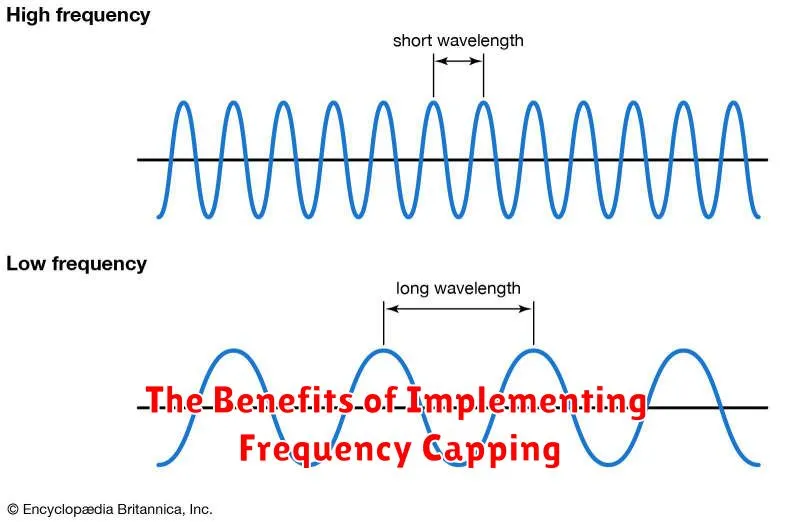In the dynamic landscape of digital advertising, maximizing campaign efficiency is paramount for achieving optimal return on investment (ROI). One often overlooked yet crucial strategy for enhancing performance is frequency capping. This technique involves limiting the number of times a specific advertisement is shown to a single user within a defined timeframe. By strategically controlling ad exposure, marketers can mitigate ad fatigue, improve user experience, and ultimately drive better results from their digital marketing initiatives. This article will delve into the intricacies of frequency capping, exploring its benefits, implementation methods, and its profound impact on digital advertising effectiveness across various platforms and channels.
The widespread adoption of digital advertising has led to increased competition for user attention, making it essential to deliver relevant and engaging experiences. Without proper frequency capping, users may become overwhelmed by repetitive ads, leading to negative brand perception and diminished click-through rates. By implementing effective frequency capping strategies, advertisers can ensure that their messages are delivered at the right time and in the right context, optimizing the chances of capturing user interest and driving conversions. This article aims to provide a comprehensive understanding of frequency capping, equipping marketers with the knowledge and tools necessary to unlock campaign efficiency and achieve their desired advertising goals, and achieve better digital advertising ROI.
What is Frequency Capping and Why Does It Matter?
Frequency capping is a fundamental technique in digital advertising that limits the number of times a specific advertisement is shown to the same user across a given period. It ensures that users aren’t bombarded with the same ad repeatedly, which can lead to ad fatigue and negative brand perception.
Why does it matter? Firstly, it improves user experience by preventing excessive ad exposure. Secondly, it optimizes campaign efficiency. By minimizing wasted impressions on already-exposed users, budget can be reallocated to reach a broader audience or test different creatives. This ultimately leads to better return on investment (ROI).
Furthermore, frequency capping can help refine your targeting strategy. By understanding the optimal number of exposures before conversion or engagement, advertisers can fine-tune their campaigns for maximum impact.
The Benefits of Implementing Frequency Capping

Implementing frequency capping in digital advertising campaigns offers a multitude of benefits, enhancing both the user experience and the return on investment for advertisers.
One primary advantage is the reduction of ad fatigue. By limiting the number of times an individual user sees a specific advertisement, brands can prevent users from becoming annoyed or desensitized to their message, thus preserving brand perception.
Improved Cost Efficiency is another significant benefit. Frequency capping helps to eliminate wasted ad impressions served to users who are unlikely to convert, optimizing budget allocation towards potentially receptive audiences. This leads to a higher conversion rate and a more efficient use of advertising spend.
Furthermore, frequency capping contributes to a better user experience. Users are less likely to be overwhelmed by repetitive ads, resulting in a more positive perception of the advertising platform and the brands advertised. A positive user experience can indirectly enhance the effectiveness of other marketing initiatives.
In summary, frequency capping optimizes ad spend, improves user experience, and maximizes campaign effectiveness.
How Frequency Capping Works Across Different Platforms
Frequency capping is implemented differently across various digital advertising platforms. Understanding these nuances is crucial for effective campaign management.
Google Ads: Google Ads uses cookies and user IDs to track ad impressions. Advertisers can set frequency caps at the campaign or ad group level. This allows for granular control over how often users see specific ads.
Facebook Ads: Facebook leverages its extensive user data for frequency capping. Options include capping impressions per day or over the lifetime of a campaign. Facebook’s precise targeting capabilities allow for highly effective frequency management.
Programmatic Platforms: Demand-side platforms (DSPs) offer sophisticated frequency capping options. These platforms often utilize device IDs, IP addresses, and other identifiers to track impressions. DSPs also allow for cross-channel frequency capping, ensuring users aren’t overexposed to ads across different websites and apps.
Each platform provides tools and settings to customize frequency capping strategies, allowing advertisers to align their campaigns with specific goals and audience preferences.
Setting the Right Frequency Cap: Best Practices
Determining the optimal frequency cap is crucial for maximizing campaign effectiveness and minimizing wasted ad spend. A one-size-fits-all approach is rarely effective; instead, consider these best practices:
- Analyze Historical Data: Review past campaign performance to identify frequency levels that led to conversions without causing ad fatigue.
- Consider Your Target Audience: Different demographics may respond differently to ad frequency. Tailor your caps based on audience segment.
- Factor in Campaign Goals: Awareness campaigns might benefit from higher frequency caps than direct response campaigns.
- A/B Test Different Caps: Experiment with varying frequency levels to identify the sweet spot for engagement and conversion.
- Monitor Performance Closely: Continuously track key metrics like click-through rates, conversion rates, and cost-per-acquisition to assess the impact of your frequency cap.
Remember that overexposure can lead to ad fatigue and negative brand perception, while underexposure might hinder campaign reach and impact. Finding the right balance is key.
Frequency Capping Strategies for Various Campaign Goals
Frequency capping is not a one-size-fits-all solution. The optimal number of exposures varies significantly based on your specific campaign objectives.
Brand Awareness Campaigns
For brand awareness, a slightly higher frequency cap might be acceptable to ensure message recall. However, avoid overexposure that leads to ad fatigue. A range of 3-5 exposures per week is often a good starting point.
Direct Response Campaigns
For campaigns focused on driving immediate actions (e.g., clicks, conversions), a lower frequency cap is generally more effective. Users are likely to respond after seeing an ad a few times. Excessive repetition can irritate potential customers and decrease performance. Start with a cap of 2-3 exposures per week.
Lead Generation Campaigns
Similar to direct response, lead generation campaigns benefit from a moderate frequency cap. Focus on providing valuable information and a clear call to action. A frequency cap of 2-4 exposures per week allows for sufficient messaging without overwhelming the target audience.
A/B testing different frequency caps is crucial to identify the most effective strategy for each campaign goal. Monitor key metrics like click-through rates, conversion rates, and cost per acquisition to refine your approach.
Advanced Frequency Capping Techniques and Segmentation
Beyond basic frequency capping, advanced strategies leverage data and segmentation for enhanced ad relevance and reduced waste. Behavioral targeting allows you to adjust frequency based on user actions, such as website visits or product views. If a user interacts positively with your ad, you might increase the frequency, while decreasing it for those who show no interest.
Contextual frequency capping considers the environment where the ad is displayed. For instance, ads on high-engagement content might warrant a higher frequency compared to less engaging content. Audience segmentation is critical. Segmenting users based on demographics, interests, or past interactions enables tailored frequency caps. A prospect in the initial awareness stage might need more impressions than a customer ready to convert.
Consider using sequential messaging, where ad frequency is tied to a specific sequence of ads designed to guide users through the marketing funnel. Effective segmentation ensures the right message is delivered at the right frequency to the right audience, maximizing impact and minimizing ad fatigue.
Measuring the Effectiveness of Your Frequency Capping Strategy
To ascertain the efficacy of your frequency capping strategy, meticulous monitoring and analysis of key performance indicators (KPIs) are paramount. This involves evaluating metrics that directly reflect the impact of controlled ad exposure on user engagement and campaign objectives.
Key Metrics to Monitor:
- Reach and Impression Distribution: Analyze the distribution of impressions across your target audience to ensure equitable exposure and minimize wasted impressions.
- Click-Through Rate (CTR): Observe changes in CTR to determine if optimal frequency leads to higher engagement or ad fatigue.
- Conversion Rate: Track conversion rates to identify the frequency threshold at which users are most likely to convert.
- Cost Per Acquisition (CPA): Monitor CPA to ensure that reduced waste from frequency capping translates to cost-efficient acquisitions.
- Website Engagement Metrics: Analyze metrics such as bounce rate, time on site, and pages per session to assess the quality of traffic generated by the campaign.
By continuously monitoring and analyzing these metrics, advertisers can fine-tune their frequency capping settings to achieve optimal campaign performance and maximize return on investment.
Common Mistakes to Avoid When Using Frequency Capping
Implementing frequency capping effectively requires careful planning and execution. Several common mistakes can undermine its intended benefits, leading to wasted ad spend and diminished campaign performance.
Overly Restrictive Caps
Setting the frequency cap too low can hinder your message’s impact. Users may not have sufficient exposure to the ad to fully grasp the message or take action. This can lead to reduced brand recall and conversion rates.
Ignoring Audience Segmentation
Applying a uniform frequency cap across all audience segments is a common pitfall. Different audience segments may require varying levels of exposure to achieve the desired outcome. Failure to segment can result in either over-exposure to some users or under-exposure to others.
Neglecting Platform-Specific Settings
Each advertising platform has its own nuances in implementing frequency capping. Neglecting these platform-specific settings can lead to inconsistencies in ad delivery and inaccurate frequency management.
Insufficient Monitoring and Adjustment
Frequency capping is not a “set it and forget it” strategy. Continuous monitoring of campaign performance and adjustments to the frequency cap based on data insights are crucial. Failing to do so can result in suboptimal results over time.
The Future of Frequency Capping in a Privacy-Focused World

The digital advertising landscape is rapidly evolving due to increased emphasis on user privacy. This shift necessitates a re-evaluation of traditional frequency capping methods. Future strategies will likely rely more on contextual targeting and first-party data to ensure relevance without compromising individual privacy.
Differential Privacy and aggregated data analysis are emerging techniques that allow advertisers to understand campaign performance while protecting user identities. Moving forward, expect a greater reliance on machine learning algorithms that can predict optimal frequency caps based on anonymized data and campaign objectives. This approach minimizes the need for intrusive tracking and delivers more relevant, privacy-respectful advertising experiences. The goal is to achieve a balance between effective campaign delivery and user data protection.
Tools and Technologies for Implementing Frequency Capping
Implementing effective frequency capping requires leveraging the right tools and technologies. Several platforms and software solutions offer robust frequency capping capabilities, allowing advertisers to precisely control ad exposure.
Ad Servers
Ad servers, such as Google Ad Manager and Xandr, provide built-in frequency capping functionalities. These platforms enable advertisers to set caps at the campaign, ad group, or even individual user level.
Demand-Side Platforms (DSPs)
DSPs offer advanced targeting and frequency capping options across various ad exchanges and inventory sources. Examples include The Trade Desk and MediaMath, which allow for sophisticated frequency management strategies.
Analytics Platforms
Analytics platforms like Google Analytics and Adobe Analytics, while not directly implementing frequency capping, are crucial for measuring its effectiveness and informing adjustments to capping strategies.
Third-Party Verification Tools
Third-party verification tools, such as DoubleVerify and Integral Ad Science, can assist in ensuring accurate frequency capping implementation and preventing ad fraud that might inflate impression counts.

